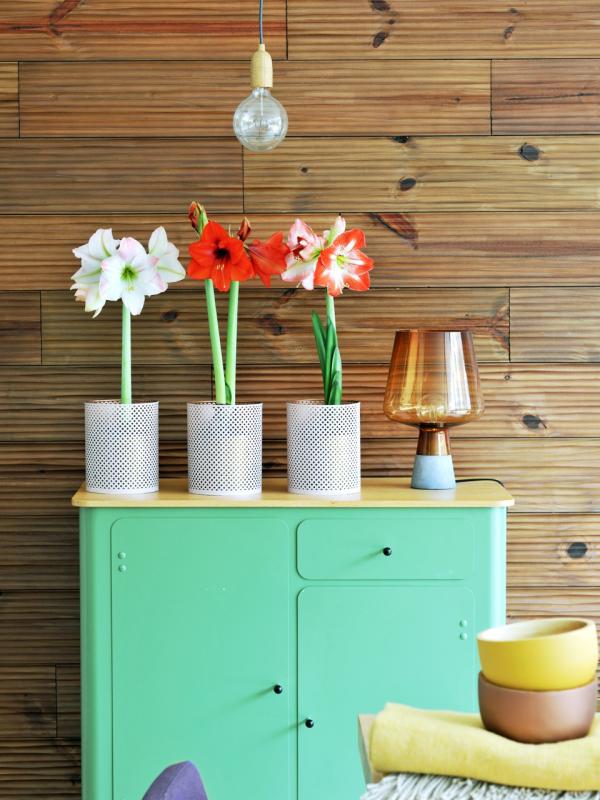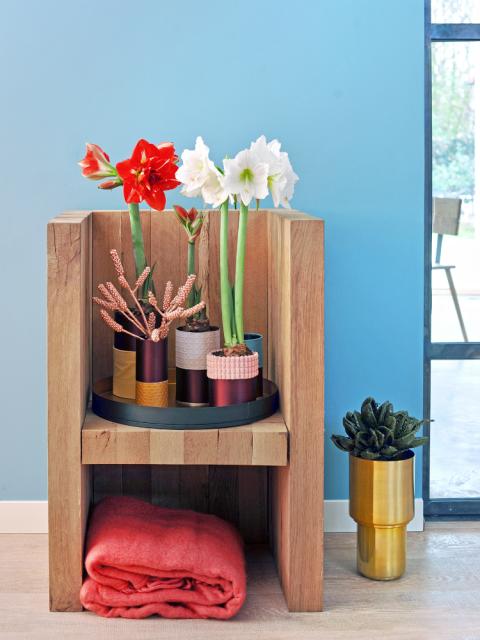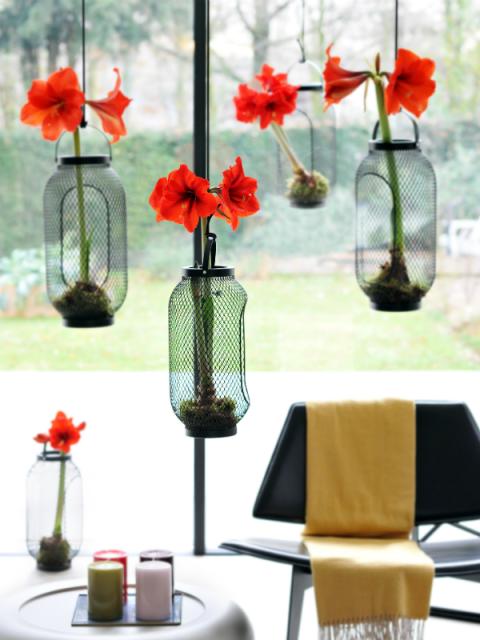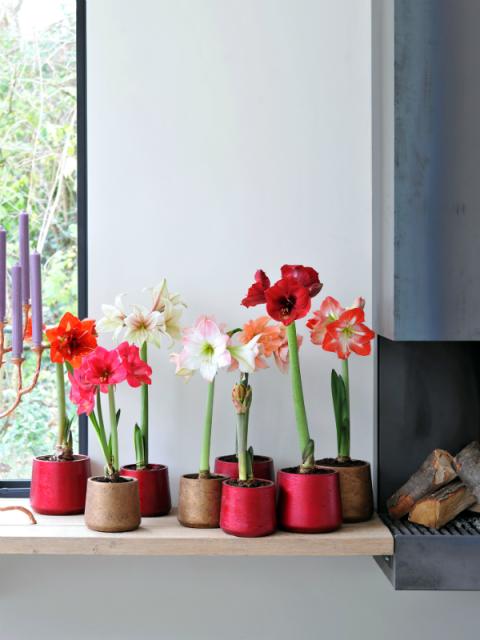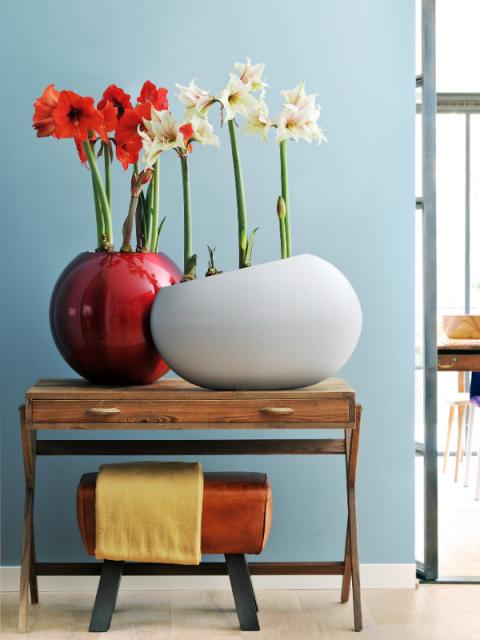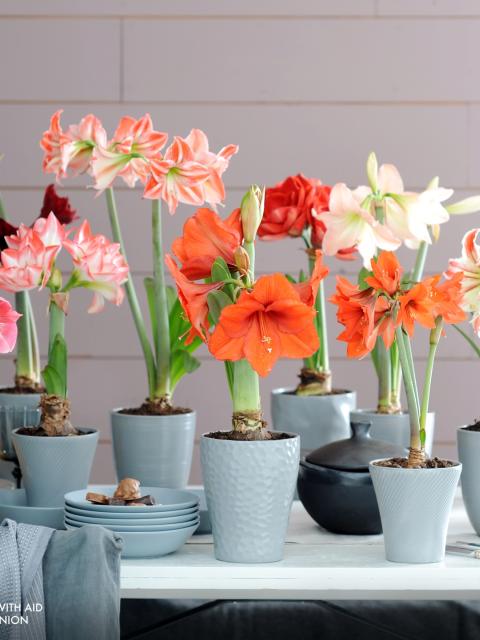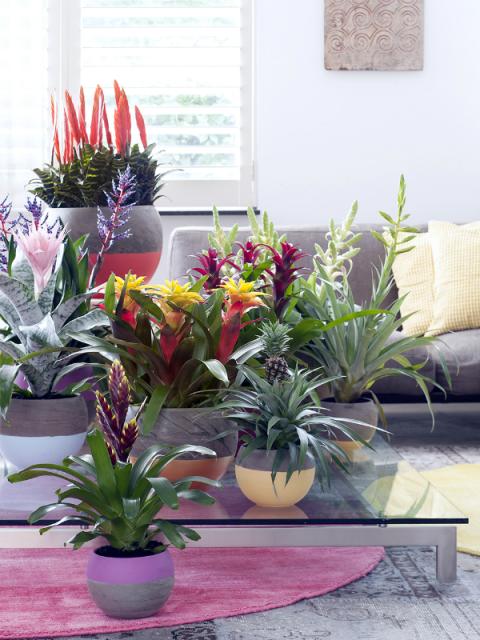Shapes and colours
Stylish and sensual Amaryllis (also known as Hippeastrum) is available in many varieties and rich earthy colours. This houseplant’s big feature is its changing appearance. A bulb produces a stately hollow stem on which smooth buds develop. These open into voluminous calyxes with velvety petals in white, salmon, red, pink or even green. The flowers can reach a diameter of 20 cm. This is very spectacular, particularly because you don’t expect such a lavish display from that elegant stem, particularly not in the winter months.
Origin
Amaryllis is a member of the Narcissus family, with more than 70 species. They grow mainly in the (sub-)tropical regions of Mexico and the Caribbean through to the north of Argentina. The first Amaryllises probably developed in Brazil. The plant was first cultivated in Europe in around 1800. The name comes from the ancient Greek word ‘amarusso’, which freely translates as “I sparkle”. It’s also the name of a girl in a Greek myth who was so besotted with the handsome but unapproachable Alteo that she pierced her heart with a golden arrow, and then visited his house every day. On the 13th day, beautiful red flowers bloomed in the places where she had spilled her blood. Alteo fell in love with her, Amaryllis’s heart healed and the world had acquired a fabulous winter flower.
Symbolism
Amaryllis symbolises pride in the best sense of the word, but also enchanting beauty.

